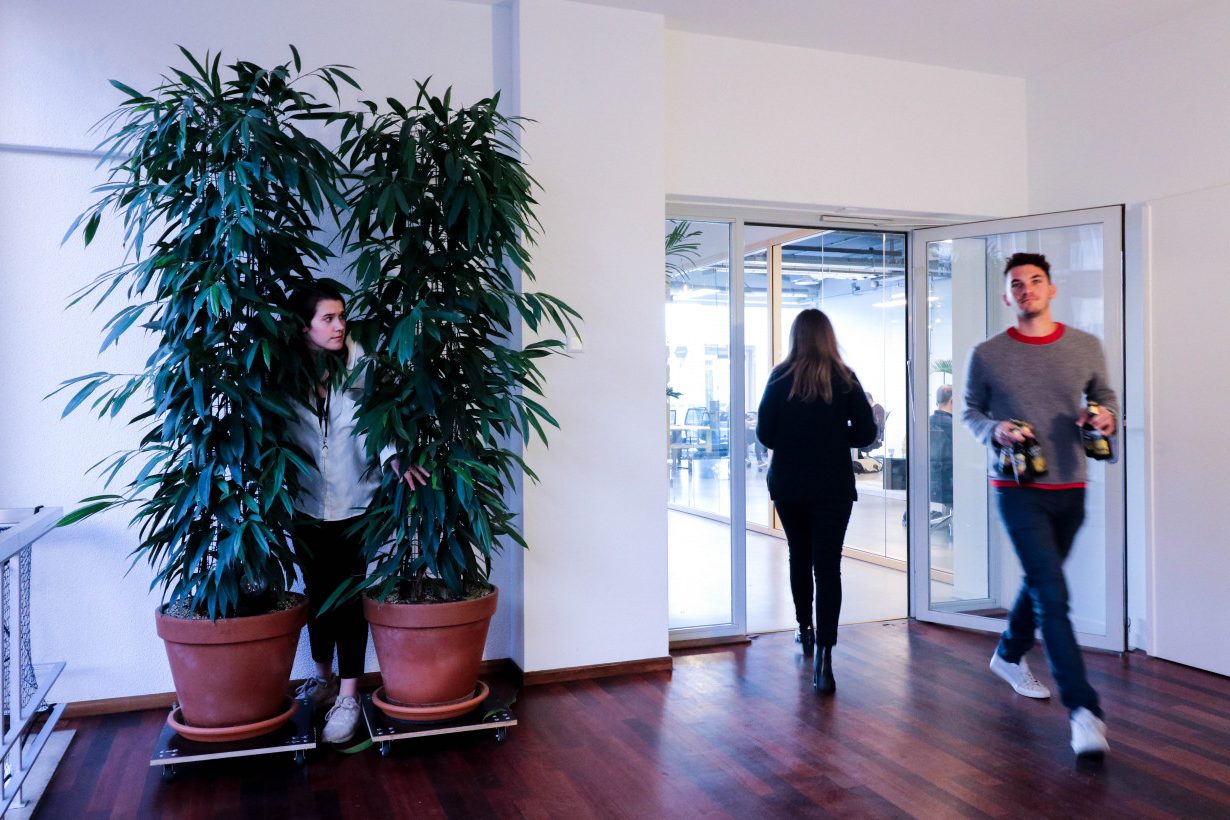
Introverts, like myself, are the slightly ungraceful personality type best known for salivating over solitude and being self-sufficient. But unfortunately for us, the world is built on social interaction. It’s the ugly truth, but us socially awkward dorks just have to accept the fact that small talk and socializing are extremely necessary evils.
This is especially true in a shared office environment like ours at TQ, where everything is specifically designed to promote networking, collaboration, and those frightening ‘unexpected encounters’ successful entrepreneurs speak so fondly of that can help your company grow. You’d think introverts wouldn’t join communities like TQ, but deep down, most of us do recognize the importance of teamwork when it comes to your job or growing your company.
That’s why I asked members of our community here at TQ for their best hacks on how to survive in such a community when talking to people just doesn’t come naturally. While a shared office space, on paper, resembles a community built for the more extroverted species, there are plenty of ways that us delicate wallflowers can connect with the right people (without having a mental breakdown).
1. Embrace the awkwardness
Maybe you’ve leaned in for a kiss when a handshake would’ve been more appropriate? Are you tongue-tied more often than not? Have you hit your head on a hanging light, tripped over in the hallway, or pressed the wrong button on the coffee machine and coffee was overflowing?
While you might feel like a clumsy potato on the inside when things like this happen, these incidents can, believe it or not, be instant icebreakers for the ‘witnesses’ around you.
In fact, showing a little vulnerability is the easiest way to create a deeper connection. By sharing our ups and downs — accidentally or on purpose — we can break down the ‘roles’ we play in our environment and connect on a more human level.
As one of our members, Milan van den Bovenkamp from Online and Kicking put it, “people should embrace the awkwardness.”
“A first impression can be awkward and should be awkward, I believe, because it can break the ice for both people, and you have something to laugh about. If there’s humor, there is, most of the time, empathy, and that’s important in a relationship,” Milan explained.
So, while you may be a little cumbersome or stumble over your words every now and then, this little bit of vulnerability can go a long way when it comes to connecting with others. So the next time something awkward happens, instead of scuttling away like a crab, acknowledge the situation and start a conversation: “Well that was awkward wasn’t it?” Embrace your awkward!
2. Take a shortcut to getting to know your community
While extroverts may find getting to know people a breeze, for the ‘soft-spoken’ types, this ‘burden’ can seem truly overwhelming.
The good news is, thanks to this thing called the Internet, you can now investigate who’s in your community without even leaving the comfort of your desk (or your noise canceling headphones).
Messaging tools like Slack offer the perfect means to reach out to people and set the tone for a more meaningful conversation in real life. We encourage our community to include as much information as possible in their profiles, including a photo, so others can find them if they’d like to connect.
Reaching out to Community Managers is another easy way to discover mutually beneficial connections in the building (without having to do all the hard work yourself). “We’re just facilitators of the right conversations, and the right activities, so you can engage without having to initiate them yourself,” explained TQ’s Community Director, Wout Laban.
Their job is to not only make your life easier but to create a culture that’s inclusive. This includes listening and analyzing your feedback (not just the loudmouths), and helping members help each other solve problems. So if you need help with anything, from a casual introduction to finding assistance with recruitment, there’s no need to suffer in silence.

3. Be the first to go beyond the superficial
While communities like TQ offer interesting and relevant events that can connect you with others and teach you the skills to help you grow, let’s face it: a crowd full of strangers is the last place you want to be when you find small talk encounters incredibly awkward.
One of our residents, Mix from TNW is (quite openly) an avid avoider of small talk: “The thing I despise most about networking is the copious amount of mindless chit-chat it can involve. One tactic that has helped me avoid these situations is making a conscious effort to escalate small talk to ‘medium talk’ as soon as possible,” Mix explained.
“Listening to what people like and dislike about their jobs is much more entertaining than discussing the weather for the third time in a row. Chatting about things you care about makes your networking experience far more fulfilling than brooding over the weekend forecast,” he continued.
Similarly, attending events that interest you or participating in non-work related social activities can also be a great place to connect. Focusing a conversation around these shared goals or interests can be a simple way to quickly escalate the conversation. Who knows, you might even make some friends!
4. Challenge yourself… sometimes
I know its probably not what you want to hear, but challenging yourself with social interaction can be deeply satisfying in the long run. While it might not seem like it at the time, the more effort you put into connecting with people means the quicker you’ll find the right people for you and your company.
Setting small goals for yourself like introducing yourself in the elevator (these conversations don’t last long), approaching someone at Friday night drinks, or attending one event each month can go a long way.
One of our residents (and fellow introvert), Jenneke Koorn from No Isolation finds that a shared office environment like TQ actually makes it easier for her to challenge herself. “Knowing that we’re all here for the same reason — that common ground really breaks the ice and makes it easier to approach people,” she explained.
However, don’t forget to leave some alone time for yourself to recharge your mental batteries. This involves knowing your limits and if they only begin after you’ve had your morning coffee, that’s totally fine too. The last thing you want is an Introvert Hangover.
Jenneke agreed in true introvert fashion: “If I’m at the coffee machine, I don’t want to chat, I just want my coffee. If I feel like socializing I’ll be at drinks on Friday.”
So there you go, set challenges for yourself on your own terms, but remember: moderation is key.
5. Remember why you’re here
In case you’ve forgotten, you’re probably here because your rational mind knows a coworking or shared office atmosphere will do wonders for your company and push you to interact with a broad range of people — even though your introverted mind would prefer you to be alone under a duvet.
The reality is, you and your business aren’t going anywhere without those (painfully) necessary interactions. Every little bit of awkward communication will eventually make you more comfortable in your environment.
So go forth my fellow introverts. Embrace your personality, use your resources, ask good questions and challenge yourself… sometimes. Do this and you shall thrive!
This article was originally published on TQ.
Get the TNW newsletter
Get the most important tech news in your inbox each week.
